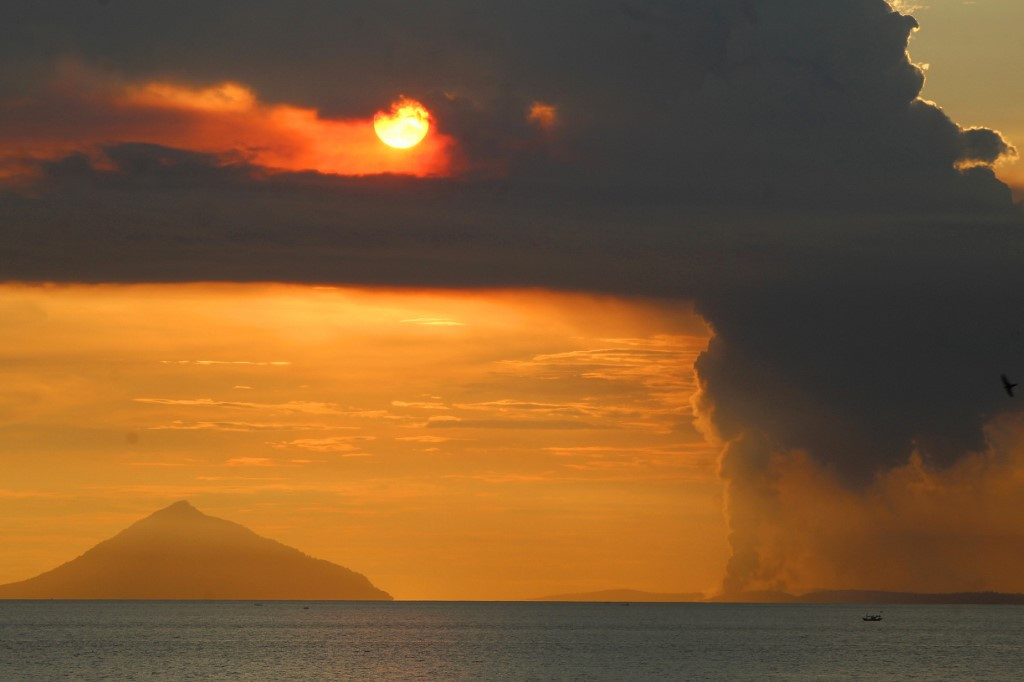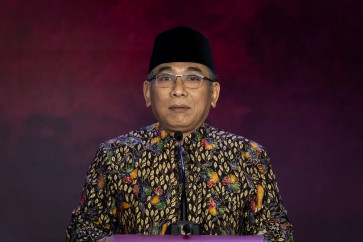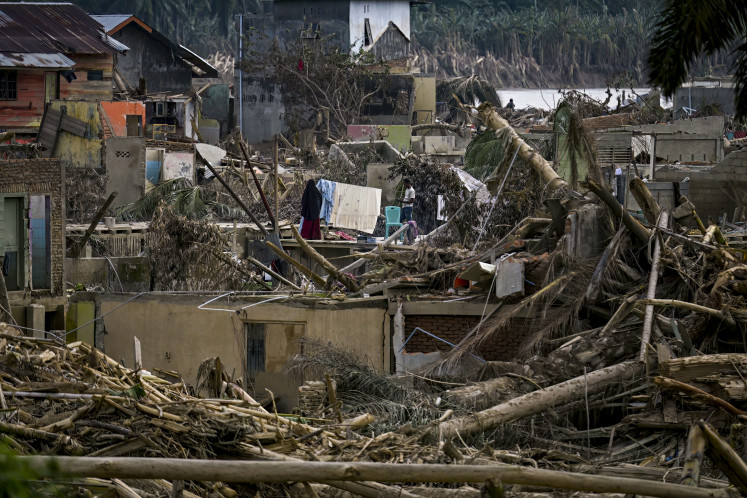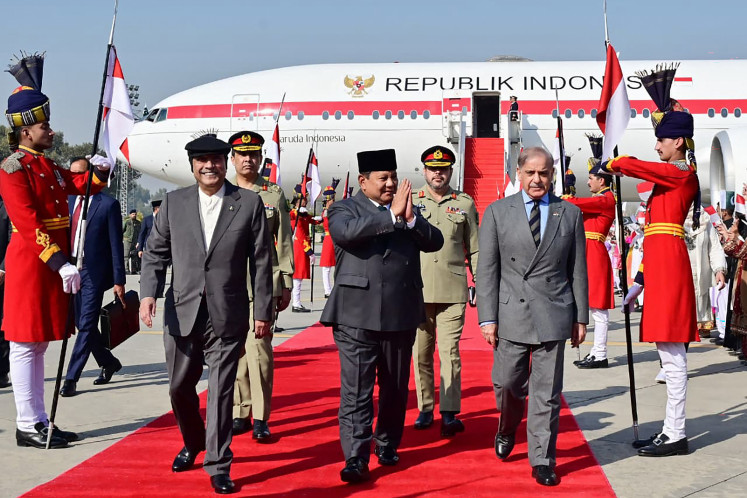Popular Reads
Top Results
Can't find what you're looking for?
View all search resultsPopular Reads
Top Results
Can't find what you're looking for?
View all search resultsAlert level for Anak Krakatau volcano raised
The government raised the alert status for Anak Krakatau (Child of Krakatoa) to its second-highest level.
Change text size
Gift Premium Articles
to Anyone
Agence France-Presse/Jakarta
The government raised the alert status for Anak Krakatau (Child of Krakatoa) – the offspring of the infamous volcano – to its second-highest level on Monday, a day after it erupted and spewed a towering ash cloud 3,000 meters into the sky.
Authorities bumped the threat of Anak Krakatau to level three of a four-tier volcanic alert system after witnessing a sharp rise in activity in the last month with the biggest eruption coming on Sunday.
They also widened the exclusion zone around the crater a day after warning nearby residents to wear masks outside because of the large plume of ash it belched over the strait that separates the islands of Java and Sumatra.
"We have increased the status of Mount Anak Krakatau from level two [...] to level three and recommended that nobody is allowed to get closer than a 5-kilometer radius from the active crater," Hendra Gunawan, head of the Center of Volcanology and Geological Hazard Mitigation, told a virtual press conference.
A significant spike in carbon dioxide emissions has also been reported at the crater, he said.
It emitted 68 tons on April 15 but more than a week later, on April 23, it emitted more than 9,000 tons.
No evacuations have been reported on nearby islands and Gunawan said the busy sea route from Merak Port in Banten to Bakauheni Port in Lampung was unaffected.
The volcano has been sporadically active since it emerged from the sea at the beginning of last century in the caldera formed after the 1883 eruption of Mount Krakatoa.
That disaster was one of the deadliest and most destructive in history with an estimated 35,000 people killed.
Anak Krakatau last erupted in 2018, generating a “silent” tsunami that killed 429 people and left thousands homeless.
The tsunami, which was apparently generated when part of the volcano's flank collapsed underwater, struck coastal areas in the vicinity.
Indonesia sits on the Pacific Ring of Fire where the meeting of continental plates causes high volcanic and seismic activity.
Last month, Mount Merapi in Central Java unleashed a torrent of hot clouds, turning the sky a fiery red, as molten lava flowed down its slopes with the eruption forcing over 250 people to flee their homes, authorities said.
The volcano – one of the most active in the world – erupted multiple times overnight, spewing gas, volcanic ash and rocks that flowed over 5 kilometers down its slopes. Residents were later told to steer clear of an area spanning a 7-kilometer radius surrounding Merapi's crater following warnings about lava and airborne volcanic material.
Hot clouds and smoke from the eruption blotted out the sky in parts of the densely populated cultural capital Yogyakarta.
Mt. Merapi is on its second-highest alert level since November 2020 after showing renewed activity. Its last major eruption in 2010 killed more than 300 people and forced the evacuation of around 280,000 residents from surrounding areas.










